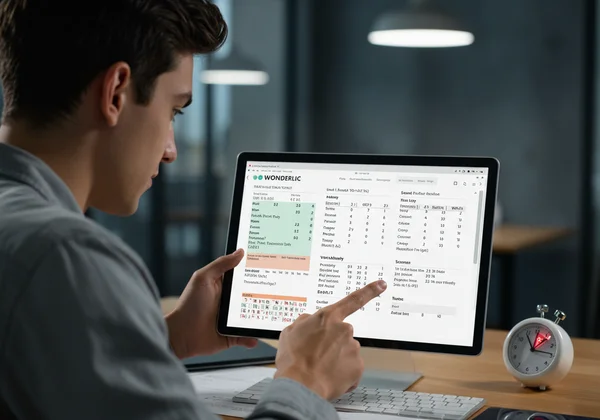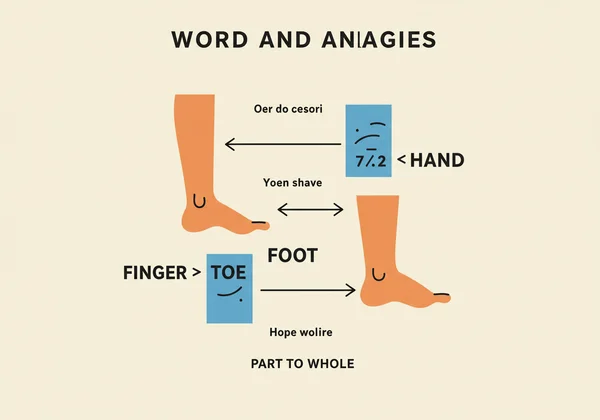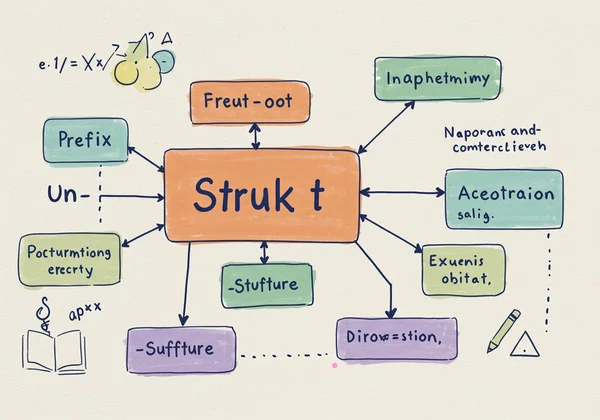Ace the Wonderlic Test: Mastering Verbal Logic, Analogies & Vocab
Feeling overwhelmed by the non-math sections of the Wonderlic Test? Many test-takers focus heavily on numerical reasoning, only to be caught off guard by the verbal questions involving logic, analogies, and vocabulary. These questions are designed to measure your critical thinking and problem-solving skills under pressure. Ready to clear up the confusion around these critical areas? This guide provides the clear strategies, examples, and practice tips you need to conquer the wonderlic verbal questions and boost your overall score. Acing the Wonderlic starts right here with a prep strategy you can trust, and you can start your prep today.

Understanding Wonderlic Verbal Questions
Before diving into specific techniques, it’s crucial to understand what the verbal portion of the Wonderlic test entails. These questions make up a significant part of the exam and are designed to assess your ability to understand and process written information quickly and accurately.
What Are Wonderlic Verbal Questions?
The verbal section of the Wonderlic isn't just about knowing big words. It's a mix of different question types designed to test your cognitive abilities in several key areas. These typically include analogies (word relationships), vocabulary (synonyms and antonyms), and logic problems (deductive reasoning). Each type requires a unique approach, but all demand swift comprehension and decisive thinking within the strict time limits of the exam.
Why Verbal Skills Are Crucial for Your Wonderlic Score
Strong verbal skills are a powerful indicator of your ability to learn, adapt, and communicate effectively—qualities highly valued by employers and academic institutions. Performing well on these questions demonstrates your capacity for critical thinking and problem-solving, which are essential in almost any professional role. Neglecting this section can significantly lower your overall score, even if you excel at the math portions. A well-rounded performance is key to achieving a top-tier score.
Common Mistakes & Time Management Tips for Verbal Sections
The biggest enemy on the Wonderlic test is the clock. Many candidates make the mistake of spending too much time on a single difficult verbal question. A key strategy is to not get bogged down. If a logic puzzle or an analogy seems too complex, make your best-educated guess and move on. Remember, every question is worth the same amount. Practicing with a free wonderlic practice test is the best way to hone your pacing and time management skills.
Conquering Wonderlic Analogies
Wonderlic analogies test your ability to identify relationships between concepts. They follow a standard format: "A is to B as C is to D." Your task is to find the word that completes the second pair in the same way the first pair is related.
Deconstructing Analogy Structures: Pairs & Relationships
The first step is to precisely define the relationship in the first pair of words. Is it a cause-and-effect relationship? Part to whole? A relationship of size or function? Understanding this core connection is vital. For example, in "FINGER is to HAND," the relationship is "part to whole." You must find a word that has the same relationship with the third word, such as "TOE is to FOOT." This skill in identifying word relationships is fundamental.

Step-by-Step Solving Techniques (with Example Questions)
Let's break down how to solve an analogy with a systematic approach.
- Example: HAMMER is to NAIL as COMB is to...
- a) HAIR b) BRUSH c) TEETH d) HEAD
- Step 1: Identify the Relationship. A hammer is a tool used on a nail. The relationship is "tool to object it acts upon."
- Step 2: Apply the Relationship. A comb is a tool used on what? It's used on hair.
- Step 3: Confirm the Answer. "HAIR" fits the relationship perfectly. "Brush" is another tool, "teeth" are what a comb has, and "head" is where the hair is, but "hair" is the direct object the comb acts upon. The correct answer is (a).
Practice Drills for Analogy Mastery
Repetition is the key to mastering analogies. You'll be amazed at how quickly you'll start spotting patterns with consistent practice! The more you practice, the faster you will become at recognizing common relationship types. Dedicate time to running through analogy drills. As you practice, try to articulate the relationship to yourself in a short sentence. This verbalization solidifies your understanding and makes the process more systematic.
Deciphering Wonderlic Vocabulary Questions
Vocabulary questions on the Wonderlic test are straightforward but require a strong command of the English language. They primarily test your knowledge of synonyms (words with similar meanings) and antonyms (words with opposite meanings).
Types of Vocabulary Questions (Synonyms, Antonyms, Definitions)
You will encounter questions that ask you to identify which two words out of a list have a similar or opposite meaning. For example, a question might present five words—ELATED, SAD, HAPPY, ANGRY, TIRED—and ask you to find the two with similar meanings (ELATED and HAPPY). Another might ask for the two with opposite meanings (SAD and HAPPY). These questions test your direct word knowledge.
Strategies for Unfamiliar Words: Context Clues & Root Words
What if you encounter a word you don't know? Don't panic. Use strategy. Break the word down into its parts—prefix, root, and suffix. For instance, the prefix "un-" often means "not," while the suffix "-ology" means "the study of." Understanding these common components can help you make an educated guess. This method of word deconstruction is an invaluable skill for any standardized test.

Building Your Wonderlic-Ready Vocabulary
While you can't learn the entire dictionary overnight, you can strategically improve your vocabulary. Focus on commonly tested words found in business and academic contexts. Reading articles from reputable sources, using flashcard apps, and actively looking up words you don't know are excellent habits to build. Consistent, focused effort will pay off. To see where you stand, take a practice test and identify your weak spots.
Tackling Wonderlic Logic Questions
Logic questions are often considered the most challenging part of the verbal section. They require you to analyze statements, draw conclusions, and identify patterns without letting assumptions or outside knowledge interfere.
Identifying Logic Problem Types (Syllogisms, Deductive, Inductive)
Most Wonderlic logic problems are a form of deductive reasoning. You'll be given a set of premises (statements assumed to be true) and asked to determine the logical conclusion that follows from them. For example: "All dogs are mammals. Fido is a dog. Therefore, Fido is a mammal." Your job is to follow the logic presented, even if it seems abstract.
A Systematic Approach to Solving Logic Puzzles
A structured approach is your best ally for these problems.
-
Read Carefully: Read each premise and understand exactly what it states.
-
Accept Premises as True: Do not use outside information. If the test says, "All cats can fly," you must accept it for the sake of the problem.
-
Identify the Conclusion: Evaluate the options to see which one logically and necessarily follows from the given premises.
-
Avoid Assumptions: Only use the information provided in the question.

Worked Examples: Logic in Action
Let's look at a common logic problem format.
- Example: Assume the first two statements are true. Is the final statement: 1) True, 2) False, or 3) Uncertain?
- The boy plays baseball. All baseball players wear hats. The boy wears a hat.
- Analysis:
- Premise 1: The boy plays baseball.
- Premise 2: All baseball players wear hats.
- Conclusion: The boy wears a hat.
- Solution: Since the boy is a baseball player (Premise 1) and all baseball players wear hats (Premise 2), it must be true that the boy wears a hat. The answer is 1) True.
Integrating Verbal Prep into Your Study Plan
Mastering the verbal sections requires more than just understanding the question types; it demands a dedicated study plan that incorporates consistent practice.
Creating a Balanced Wonderlic Study Schedule
Don't just focus on your weaknesses. Create a study schedule that allocates time to all sections of the Wonderlic test—verbal, math, and spatial reasoning. A balanced approach ensures that you are prepared for anything the test throws at you. Even 20-30 minutes of focused practice each day can make a huge difference.
The Power of Timed Practice for Verbal Sections
The single most effective way to prepare for the Wonderlic is to take timed practice tests. This simulates the real exam environment and trains you to answer questions quickly and efficiently. The Wonderlic is as much a test of speed as it is of knowledge. You can find a highly realistic, timed wonderlic practice test on our homepage to start building your speed and confidence.
Maximize Your Wonderlic Prep
Our platform is designed to be your one-stop shop for Wonderlic preparation. After taking our free, highly-realistic simulation test, you can unlock a unique AI-powered analysis report. This report provides deep insights into your cognitive strengths and weaknesses, offering a personalized improvement plan that goes far beyond a simple score. It can highlight areas within the verbal section, like analogies or logic, where you need the most work.
Your Path to Wonderlic Verbal Mastery Starts Now
Conquering the Wonderlic verbal sections—logic, analogies, and vocabulary—is entirely achievable with the right strategy and consistent practice. By breaking down each question type, learning systematic approaches, and managing your time effectively, you can turn a potential weakness into a major strength. The key is to move from passive learning to active practice. Don't wait until the last minute. Start building your skills and confidence today by taking a free Wonderlic sample test on our website.
Frequently Asked Questions About the Wonderlic Test
What is the Wonderlic Test and what does it measure?
The Wonderlic Cognitive Ability Test is a popular pre-employment and academic assessment. It's designed to measure your ability to learn, adapt, solve problems, and understand instructions. It assesses both your fluid and crystallized intelligence through a series of math, verbal, and logic questions.
Is the Wonderlic Test truly hard for most people?
The difficulty of the Wonderlic test lies primarily in its strict time limit: 50 questions in just 12 minutes. This leaves only about 14 seconds per question. While the individual questions aren't excessively complex, answering them all correctly under such intense time pressure is a significant challenge for almost everyone.
How long do I have to complete the Wonderlic Test?
The standard Wonderlic Cognitive Ability Test, often called the Wonderlic Personnel Test (WPT-R), gives you exactly 12 minutes to answer 50 questions. This rapid pace is a core feature of the assessment.
What is considered a good score on the Wonderlic Test?
A "good" score is relative to the job or program you're applying for. The average score is around 20-21 out of 50. However, different professions have different benchmarks. For example, an administrative role might require a score of 24, while a more complex role like a systems analyst might require a 30 or higher. You can learn more about score interpretations with our expert prep guides.
Can I use a calculator during the Wonderlic Test?
No, you are not allowed to use a calculator on the Wonderlic test. All mathematical calculations must be done by hand or in your head, which adds to the test's challenge and emphasizes the need for strong mental math skills.